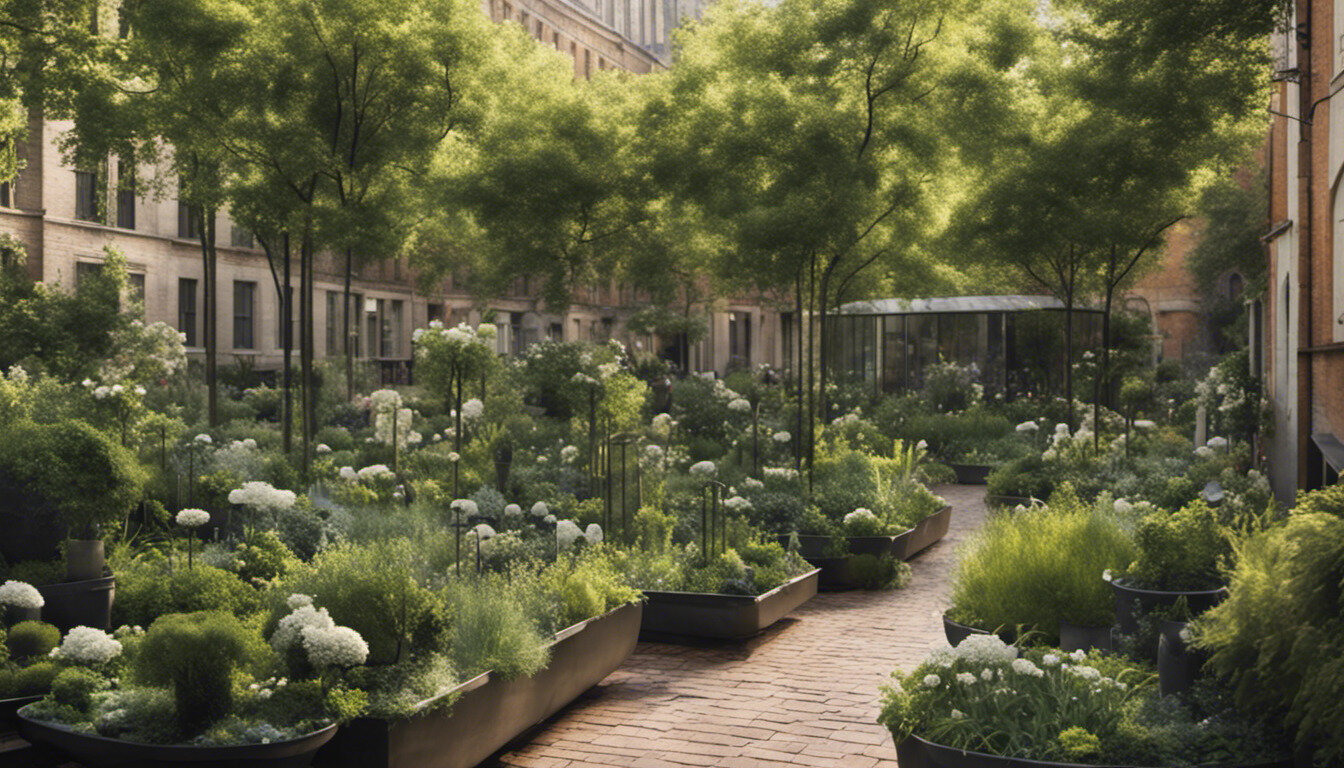The Best Guide To City Blooming
City Blooming Can Be Fun For Anyone
Table of ContentsNot known Facts About City BloomingExamine This Report on City Blooming6 Simple Techniques For City BloomingThe 45-Second Trick For City BloomingThe Facts About City Blooming Uncovered
Interested in expanding food up for sale in the City of Chicago? Thinking concerning beginning a neighborhood yard? Changes to the Chicago Zoning Regulation allow agricultural usages like community yards and urban farms in lots of components of the city. Below is a list of often asked concerns concerning the policies and regulations that cultivators need to think about when planning an urban agriculture task.
The zoning change does not change any other codes managing composting, structure permits, acquiring or renting City owned building, business licenses or environmental contamination. There are existing codes that control these concerns and they remain completely impact and may apply to your task. Community gardens are typically had or managed by public entities, public organizations or community-based organizations and preserved by volunteers.
Urban ranches grow food that is planned to be offered, either on a nonprofit or for-profit basis. Due to their business purpose, metropolitan ranches call for a company license. Yes. An area yard is allowed to sell excess generate that was expanded on site if the sales are accessory or subservient to the yard's primary objective described above.
8 Simple Techniques For City Blooming
Composting is allowed yet only for plant product that is created and utilized on site. The quantity of compost product can not exceed 25 cubic backyards at any type of given time according to the criteria in 7-28-715 of the City's Municipal Code. Yes. Because the dirt at a lot of brand-new garden websites requires changing, compost, dirt, timber chips, or other materials can be gotten to build or enhance the expanding area - garden care.

If a building license is needed then the hoophouse will be taken into consideration an accessory building. You can discover more regarding the structure permit needs by getting in touch with the Department of Buildings. The 25,000-square-foot dimension restriction is meant to prevent a single community garden from controling a provided block or taking away from the block's existing domestic or commercial personality.
The limitation does not put on gardens found in Public Open Room (POS) districts. Can there be even more than one community yard that is 25,000 square feet on a single block? Yes. The dimension limit applies to private gardens, not to private blocks. No. Fencing is not called for, however, gardens that have huge parking areas may be needed to mount secure fencing or other landscaping functions.
Little Known Facts About City Blooming.
B1 & B2 areas call for that all business use tasks be conducted inside. R areas limit business activity. The laws show the purpose and intent of the Zoning Code. Is fence required for city ranches? Yes. Fences may be required, in addition to landscape design and testing, for sure auto parking areas and outside work or storage space locations relying on area and the certain task happening.
Urban farms call for building licenses and zoning approvals prior to building and construction (eco-friendly practices). Various other see this page forms of city review might be needed depending on specific structures, activities, size, landscape design, licensing, public health and stormwater administration concerns.
The Division of Business Matters and Customer Defense can aid identify the particular kind of service permit that's needed. Off street auto parking is needed for many industrial jobs in Chicago. The needed number of car parking areas is based on the number of staff members functioning on website and not the square video of the expanding area.
What Does City Blooming Mean?

Yes. A metropolitan ranch can market compost material produced on site, nevertheless, the operation needs to abide by the laws in 7-28-715 of the Chicago Municipal Code. Yes. Aquaponic systems are allowed inside your home on city ranches in numerous zoning areas. Nevertheless, a zoning evaluation and structure authorization is required in order to install structures or systems and a company permit is needed as explained over.
As much as five hives or swarms of honey might be maintained as an accessory usage. Nonetheless, beekeepers need to sign up with the Illinois Department of Agriculture. For more details regarding the suggested zoning amendment you might speak to the Division of Housing and Economic Advancement, Bureau of Planning and Zoning at 312.744.8563.
, which takes area in rural areas at the side of residential areas.
Not known Factual Statements About City Blooming
It can include an activity of organic cultivators, "foodies" and "locavores", who seek to develop social networks based on a common values of nature and neighborhood holism. These networks can create by means of official institutional assistance, coming to be incorporated right into regional town planning as a "transition town" movement for sustainable urban development.
Some of the first proof of city agriculture comes from Mesopotamia.